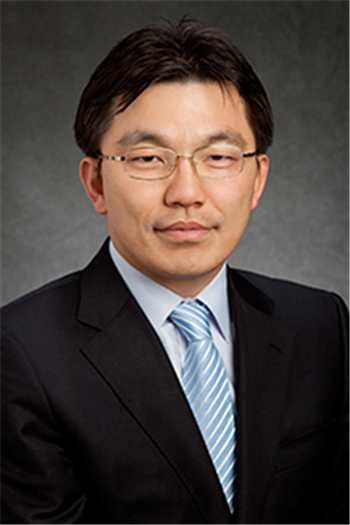Technologies for Emerging Infectious Diseases
Invited Speaker
Innovations in Infectious Disease Diagnostics, Discovery, and Delivery
Biofilm Comes Back: Inhibiting regrowth with Self-Locomotive Antibacterial Micromotors (SLAM)
Thursday, October 9, 2025
3:45 PM - 4:00 PM PDT
Location: Room 26B

Hyunjoon Kong, PhD
Robert W. Schaefer Professor
University of Illinois at Urbana-Champaign
Urbana, Illinois, United States
Invited Speaker(s)
Introduction: : Biofilms, viscoelastic communities of bacteria embedded in extracellular polymeric substances (EPS), pose major challenges in both infection control and sanitation. Although many antimicrobial treatments can kill planktonic bacteria, removing biofilm and preventing its regrowth remain highly difficult. For instance, a mixture of hydrogen peroxide (H₂O₂) and peracetic acid (PAA) can eliminate nearly all Pseudomonas aeruginosa cells in a biofilm within 10 minutes, yet the biofilm typically re-forms within a day. To address this challenge, this talk will first disclose that treatment with H₂O₂ + PAA actually increases the EPS mass surrounding individual cells, as disclosed through immunostained biofilm imaging and quantitative analysis with BiofilmQ. To tackle this challenge, we introduce self-locomotive antibacterial micromotors (SLAM), which actively invade and break down EPS through mechanical disruption and cavitation. Combined with H₂O₂ + PAA, this approach effectively suppresses biofilm regrowth for over two months. These findings highlight a broadly applicable strategy for controlling infections and preventing biofouling in healthcare, household, and industrial environments.
Materials and
Methods: : 1. Biofilm Analysis
To visualize the biofilm matrix, protein components were labeled with fluorescein isothiocyanate isomer. Subsequently, polysaccharides were stained with concanavalin A conjugated with tetramethyl rhodamine. The stained samples were imaged using a confocal laser scanning microscope. Z-stack images were processed with BiofilmQ software to obtain 3D reconstructions, which were further visualized with ParaView. Quantitative analysis in BiofilmQ included mean biovolume, Manders’ coefficient, and intensity ratio.
2. SLAM preparation
SLAM particles were fabricated by first coating diatom biosilica particles with polydopamine, followed by in situ deposition of manganese oxide (MnO₂) nanosheets. The cleaned diatoms were dispersed in water containing 100 mg of dopamine hydrochloride. To trigger dopamine polymerization, TRIS buffer (pH 8.5) was added. The resulting polydopamine-modified diatoms were suspended in KMnO₄ solution, where permanganate was reduced to form MnO₂ nanosheets directly on the PDA surface.
Results, Conclusions, and Discussions:: We found that the interaction between bacterial cells and EPS matrix is a key driver of biofilm regrowth. Although treatment with the oxidative mixture of H₂O₂ and PAA initially reduced both viable cells and EPS, it ultimately failed to prevent biofilm recovery. In contrast, treatment with SLAM markedly diminished EPS volume and reduced EPS association with surviving cells. When followed by H₂O₂ + PAA treatment, this approach effectively suppressed regrowth, likely due to enhanced oxidative stress and the resulting loss of bacterial metabolic activity. Collectively, these results suggest that lowering the EPS-to-cell mass ratio is a key strategy for restricting biofilm recurrence. Beyond their mechanistic insight, these findings have broad implications for improving antimicrobial interventions, which often focus solely on killing cells without addressing the protective role of the biofilm matrix.
Acknowledgements and/or References (Optional): :
